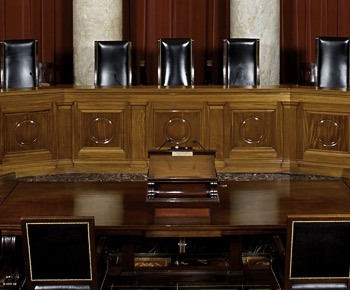 On June 27, 2016, the United States Supreme Court denied certiorari to Sequenom, Inc., which will let stand a decision of the United States Court of Appeals for the Federal Circuit that ruled a truly revolutionary medical test to be patent ineligible.
On June 27, 2016, the United States Supreme Court denied certiorari to Sequenom, Inc., which will let stand a decision of the United States Court of Appeals for the Federal Circuit that ruled a truly revolutionary medical test to be patent ineligible.
The innovation in question is a test for detecting fetal genetic conditions in early pregnancy that avoided dangerous, invasive testing techniques that are potentially harmful to both the mother and the fetus.
The invention, which was embodied in U.S. Patent No. 6,258,540, claimed certain methods of using cffDNA. The patent teaches technicians to take a maternal blood sample, keep the non-cellular portion (which was “previously discarded as medical waste”), amplify the genetic material that only the inventors had discovered was present, and identify paternally inherited sequences as a means of distinguishing fetal and maternal DNA. The claimed method does not preempt other demonstrated uses of cffDNA.
The single question presented by Sequenom in the petition for certiorari denied by he Supreme Court was as follows:
Whether a novel method is patent-eligible where: (1) a researcher is the first to discover a natural phenomenon; (2) that unique knowledge motivates him to apply a new combination of known techniques to that discovery; and (3) he thereby achieves a previously impossible result without preempting other uses of the discovery?
If the Supreme Court were to have taken the case, they would have been required to reconsider the overwhelming breadth and scope of their ruling in Mayo Collaborative Servs. v. Prometheus Labs. Obviously, the Supreme Court is not ready to reconsider Mayo.
Even Judge Dyk, who is more skeptical of patents than most of the other judges on the Federal Circuit, thinks the Supreme Court went too far in Mayo. Writing to provide his thoughts after the per curiam decision denying Sequenom’s petition for rehearing en banc at the Federal Circuit, Judge Dyk explained that he shares the concern of some of the other judges on the Federal Circuit who think Mayo is too restrictive. Dyk wrote:
I share the concerns of some of my colleagues that a too restrictive test for patent eligibility under 35 U.S.C. § 101 with respect to laws of nature (reflected in some of the language in Mayo) may discourage development and disclosure of new diagnostic and therapeutic methods in the life sciences, which are often driven by discovery of new natural laws and phenomena. This leads me to think that some further illumination as to the scope of Mayo would be beneficial in one limited aspect. At the same time I think that we are bound by the language of Mayo, and any further guidance must come from the Supreme Court, not this court.
Where patent eligibility goes from here in the life sciences sector is uncertain. Of course, a bit of good news did come on July 5 when the Federal Circuit issued its decision in Rapid Litigation Management LTD v. Cellzdirect, Inc. Stay tuned for more analysis on that case in the coming days.
Tags: patent, Patent eligibility, patents, SCOTUS, Supreme Court




You share in the PLI Practice Center community, so we just ask that you keep things civil. Leave out the personal attacks. Do not use profanity, ethnic or racial slurs, or take shots at anyone's sexual orientation or religion. If you can't be nice, we reserve the right to remove your material and ban users who violate our Terms of Service.